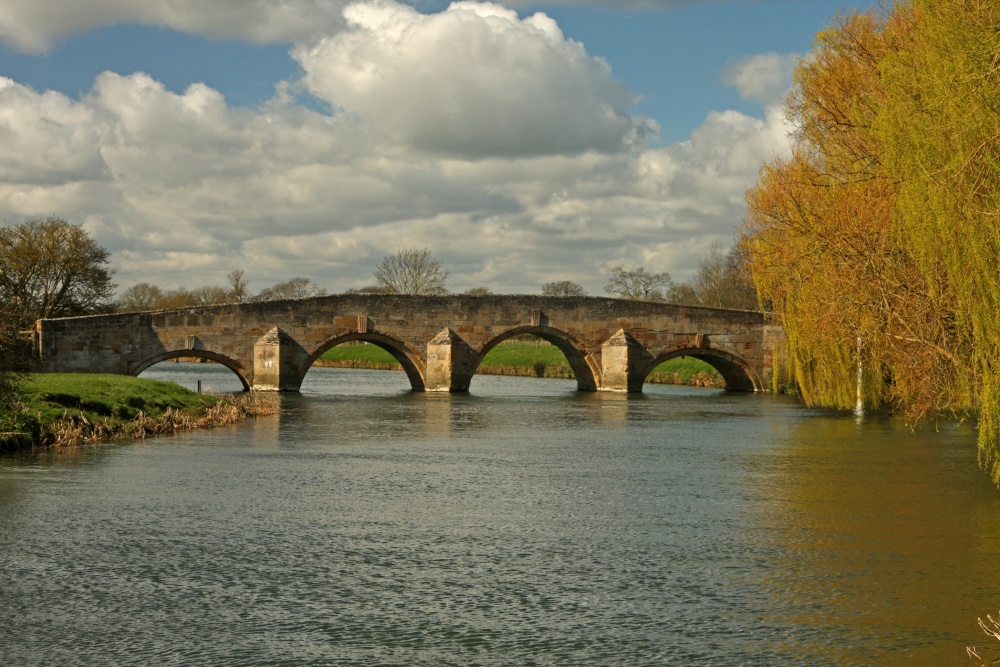PicturesOfEngland.com Member Login
You are not logged in.
Fotheringhay
Old stone bridge across the river Nene, which was the reason for Fotheringhay’s existence (Simon de Senlis, built the first wooden castle there, around 1100, to control the river crossing on a now lost main road from London to Stamford. ) After death of Richard III Fotheringhay also became Tudor property as well, after the death of Cecily, the Duchess of York, in 1497. Henry VII gave it to his wife, Elizabeth of York, and his successor Henry VIII also bestowed it on each of his six wives, taking it back each time he divorced or executed them (although number three and Jane Seymour did die of natural causes after giving birth to the future Edward VI). His first wife, Catherine of Aragon, spent a considerable amount of money on improving the castle, which had declined considerably after the end of the Plantagenets. The king himself probably visited the castle, with fifth wife Catherine Howard, in 1541 while travelling north to avoid the plague in London.Ownership of the castle passed to James I when he united England and Scotland after Elizabeth’s demise, in 1603. But he must have had little taste for the place that had seen such tragedy for his mother. By 1635, it was deserted and going to ruin, not long afterwards it was demolished altogether. Popular legend has it that James ordered its destruction as an act of revenge .
Browse all Springtime in England images Add to favourites
Please add a comment..
Please login to make a comment on this picture
Camera Make: Canon� Model: Canon EOS 40D�
Exposure Program: Aperture Priority, Focal length: 53 mm, Aperture: f 8, ISO: 100, Exposure time: 1/200 sec, Metering Mode: Multi-Segment, Exposure Bias: -0.33333333333333 EV
Date/Time Creation: March 22, 2014, 12:14 pm
ImageID:1189132, Image size: 3888 x 2592 pixels
